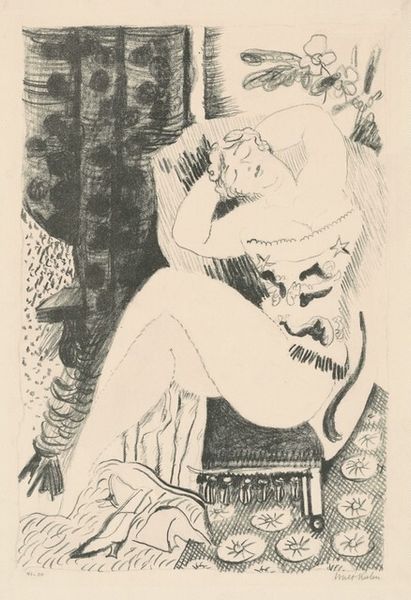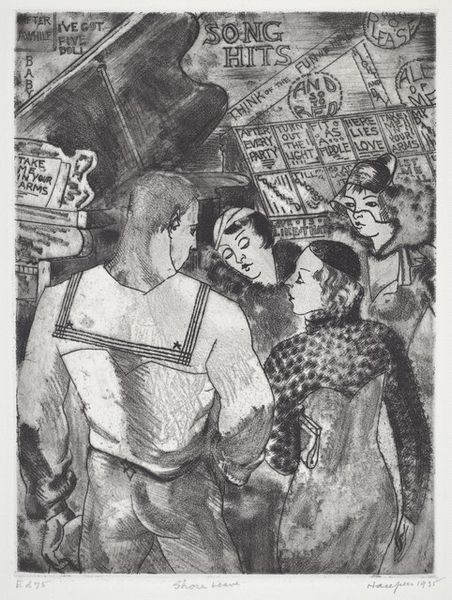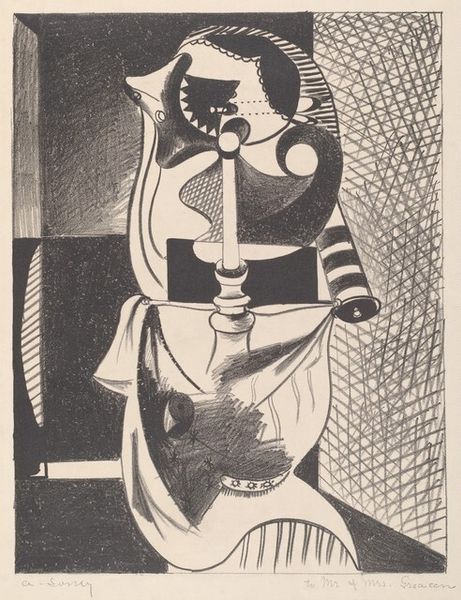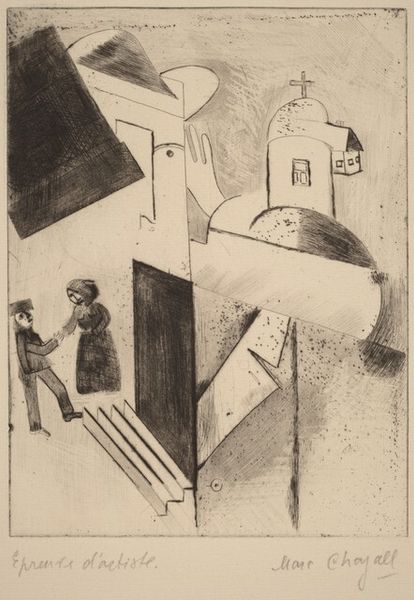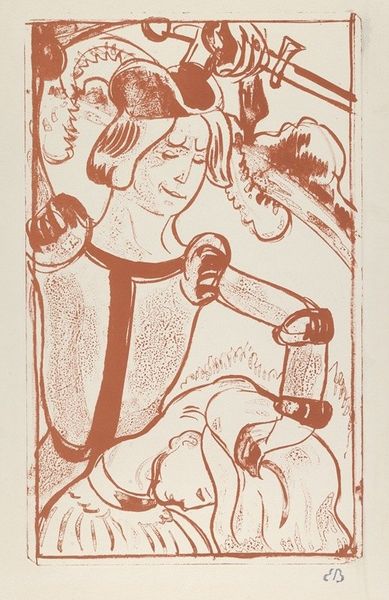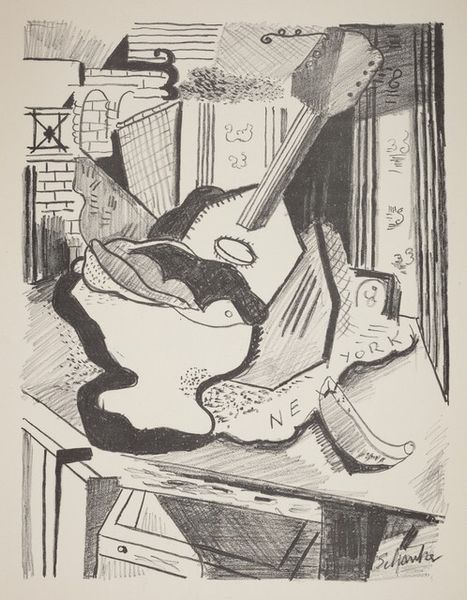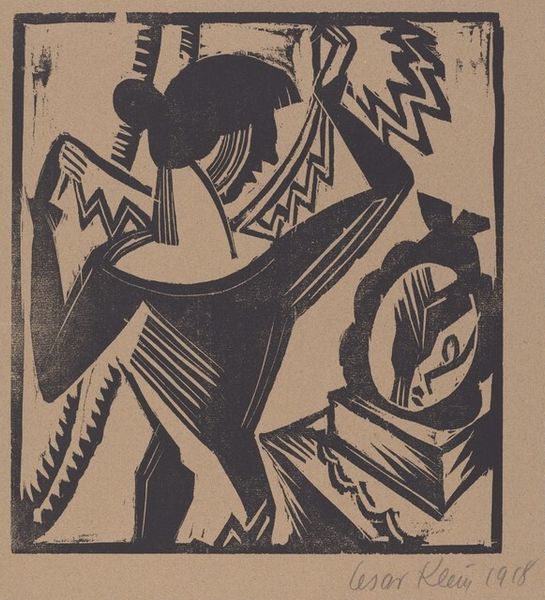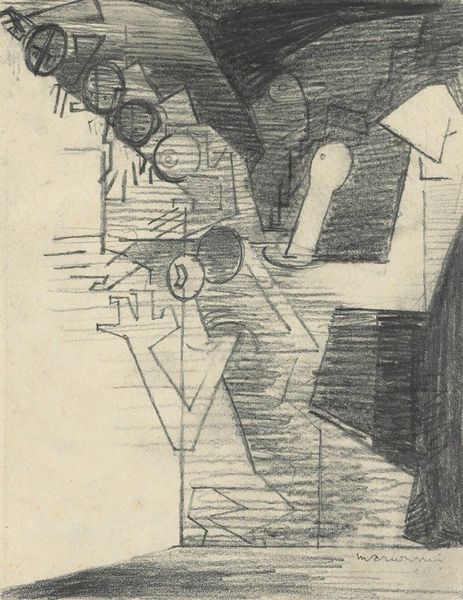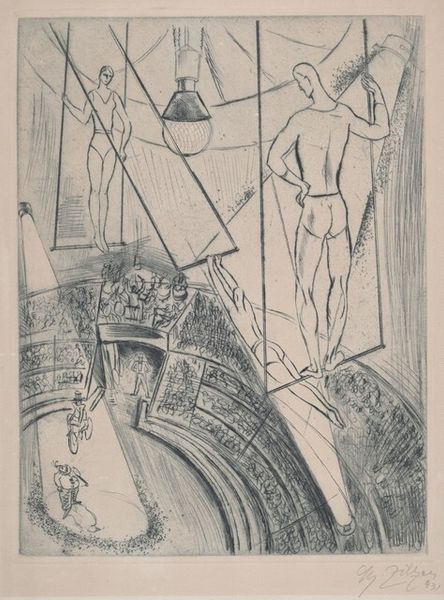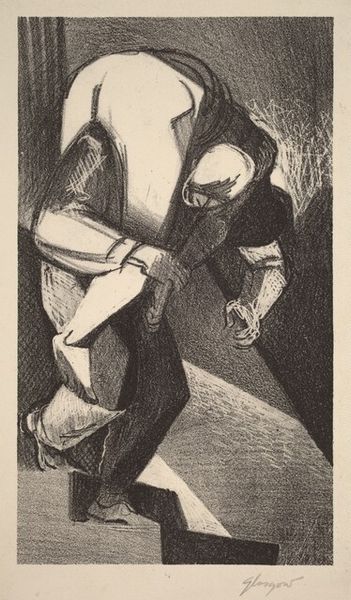
drawing, print, pencil
#
portrait
#
pencil drawn
#
drawing
# print
#
pencil sketch
#
figuration
#
pencil drawing
#
pencil
#
expressionism
#
modernism
Dimensions: image: 46.3 x 32.9 cm (18 1/4 x 12 15/16 in.) sheet: 61.7 x 32.9 cm (24 5/16 x 12 15/16 in.)
Copyright: National Gallery of Art: CC0 1.0
Curator: Marc Chagall’s drawing, "Man with a Pig," completed sometime between 1922 and 1923, is an intriguing piece executed in pencil. Editor: It definitely evokes a feeling of folk tale meeting dream logic; the composition has an ethereal quality despite being a rather direct rendering. Curator: I find myself drawn to the quality of line, seeing that his visible pencil strokes really emphasize the hand of the artist and how each part contributes to the entire work as a handmade thing. Think about the types of pencils available and paper textures at the time; this would affect the artist's output. Editor: Absolutely, and consider the social dynamics present, how our own notions of identity, performance, and cultural position come into play as the man encounters this pig. Look at how their relationship is depicted, the power dynamics represented. Curator: True, Chagall had an awareness of those things when he drew them from real life or experience into something represented on paper as part of a broader marketplace. This makes the image something between a portrait of the artist’s surroundings as well as commentary. The visible pencil strokes reveal this in such an intimate fashion because of that choice. Editor: Exactly, this choice isn’t without purpose or even potentially political, and this seemingly pastoral scene reflects the tension felt across Europe between both world wars and beyond; a tension born of poverty, dispossession, displacement...it’s all in his technique and symbolism! Curator: Thinking through these points gives the viewer insights into the way "Man with a Pig" speaks to ideas about production and its implications. I like its commentary about art making during times of great instability and material production in art. Editor: Agreed! By observing its creation we are also forced to think about larger concepts beyond technique or artistry, too: class, oppression, inequality, human nature—in total they are all valuable ways to unpack history through creative interpretation!
Comments
No comments
Be the first to comment and join the conversation on the ultimate creative platform.
